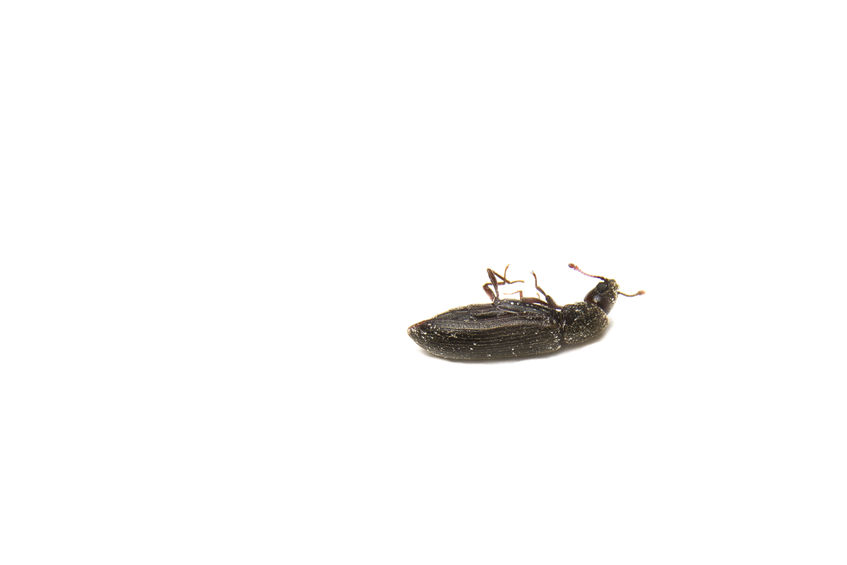The wood-boring beetle species that are known pests of structures are commonly referred to as “powderpost beetles,” and they belong to the superfamily Bostrichoidea. Due to taxonomic revisions, the species in this superfamily are constantly undergoing name changes, but powderpost beetle pests belong to three groups commonly known as “true powderpost beetles,” “deathwatch beetles,” and “false powderpost beetles.” Wood-boring beetle pest species from all three of these groups frequently establish damaging infestations within the structural and ornamental wood components of homes and buildings in Massachusetts. According to multiple nationwide surveys of pest control professionals, true powderpost beetles are the fourth most commonly managed wood destroying insect pests behind estern subterranean termites, carpenter ants, and carpenter bees.
Female powderpost beetle adults lay eggs in narrow crevices, cracks and pores on the surface of both natural and finished wood sources. Some species see adult females excavate small holes on the surface of wood for the purpose of egg deposition. All powderpost beetle infestations occur within moist wood items, and some species only infest wood items that have developed fungal decay. Tiny larvae that emerge from eggs burrow into the wood substrate, resulting in costly damage. Some species feed on moist wood, while others feed on fungi that grow on moist wood, but all species reduce wood to a fine powder that is often found near previously infested wood items. Larvae infest and feed on woodwork for a period of three months to more than three years, depending on the species. After larvae pupate to reach adulthood, they carve out an exit hole on the surface of the infested wood item in order to mate in the natural environment. Exit holes are around ⅛ of an inch in width and infestations are usually first noticed when homeowners find exit holes located above discarded piles of wood powder. Professional pest control intervention is usually necessary to rid structures of powderpost beetle infestations.
Have you ever suspected your home of being infested with powderpost beetles?

